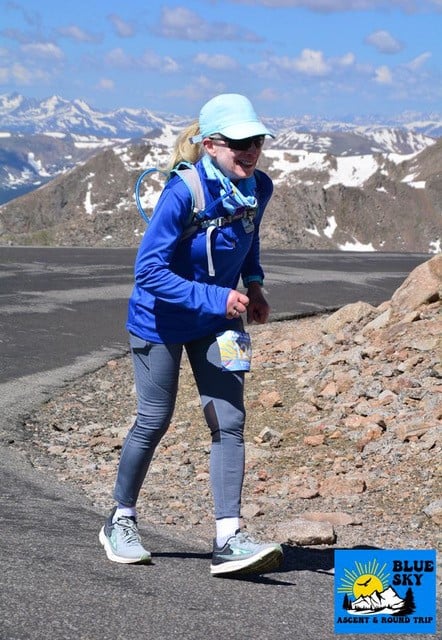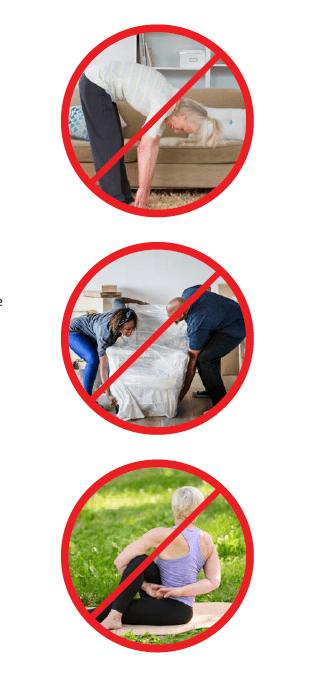Six weeks of rest critical for fast recovery from spine fusion

Although Theresa Daus-Weber had high hopes for her lumbar fusion recovery, she questioned whether she would ever run races again. Five months after her surgery, she had her answer after racing to the top of 14,265-foot Mt. Blue Sky and placing first in her age group.
“Throughout the entire race, I kept thinking, ‘I don’t hurt. I don’t hurt. This is working,’” she said.
Daus-Weber, 69, of Littleton, Colo., is not your typical patient. For decades, until back and leg pain stopped her, Daus-Weber competed as a member of the US 100K Team in world championships and ultra-distance races around the world.
But while her athleticism is remarkable, her road to lumbar fusion recovery is one that can be followed by every patient.
“Granted, Theresa is an exceptional athlete at baseline, but what she did for her lumbar fusion recovery is what every patient can do,” says Mark Hugo, a physician assistant at Neurosurgery One who was part of Daus-Weber’s spine surgery team.
Following Lumbar Fusion Recovery Instructions
After spinal injections to relieve pain in her lower back and legs no longer worked, Daus-Weber was told she needed surgery.
“Nobody wants to hear that. It was frightening. I didn’t know if I would run again,” Daus-Weber says. “I didn’t know anyone who had gone through surgery who could give me reassurance that I would be able to race again. I want to reassure future patients that this is possible.”
On Jan. 31, 2024, Dr. Adair Prall, a board-certified neurosurgeon with Neurosurgery One, performed a laminectomy and lumbar spinal fusion on Daus-Weber. A laminectomy is used to remove a small portion of bone to take pressure off the nerve. Spinal fusion connects two or more spinal vertebrae to maintain that space. In Daus-Weber’s surgery, Dr. Prall fused two levels of vertebrae, L3-5, in her lumbar (lower back) spine.
Before and after her surgery, Daus-Weber says she followed instructions precisely. “I did exactly what they said. Always,” she says. “I paid attention to everything from pre-surgical nutrition to getting up and getting dressed and walking the hospital floor within 24 hours of my surgery.”

Daus-Weber’s adherence to the lumbar fusion recovery protocol fueled her fast comeback and is what can help all patients, regardless of whether they want to run a marathon or just run around doing errands, Hugo says.
The most important post-surgery rule is to limit bending, lifting and twisting for six weeks. “You have to give yourself six weeks to recover,” Hugo says. “If you go back too soon, you risk delaying your recovery.”
Daus-Weber’s pain was due to stenosis, which causes a narrowing in the spinal canal that puts pressure on nerves. In the lower back, stenosis most often causes leg pain. When that space is opened during surgery, patients feel almost immediate relief from the leg pain. Patients often want to take advantage of the freedom of pain right away, Hugo says. But it’s critical to give the muscles around the spine that were displaced and stretched during surgery time to heal.
Once patients are cleared at their six-week appointment, they need to start physical therapy to gradually build strength to support their spine and to allow them to regain activity they might have given up due to the pain. Core strengthening to support the spine is especially important.
“Even though Theresa was a high-level athlete, she did everything we asked her to do,” Hugo says.
After being cleared from the initial restrictions at her 6-week appointment, Daus-Weber started working with a
physical therapist and began her lumbar fusion recovery by first walking around her neighborhood and gradually increasing her mileage. At her 4-month check-up when she was given the all clear, she began her training to run the 14.5-mile Mt. Blue Sky Ascent just one month later. “I trained on Mt. Blue Sky seven times during that period, walking up and down and then doing training runs,” she says.
Lumbar Fusion Recovery Starts Before Surgery
A key component of Neurosurgery One’s spine surgery program is its ERAS program. ERAS, which stands for Enhanced Recovery After Surgery, is a patient education program that has been proven to speed recovery, decrease use of opioids and reduce complications.
The ERAS program teaches spine surgery patients what they can do both before and after surgery to improve their own recovery, says Cate McGraw, a certified nurse practitioner at Neurosurgery One who oversees the ERAS program.
“If you can focus on good health leading into surgery, it really helps your post-op recovery,” McGraw explains.
The ERAS pre-surgery recommendations include:
- Eating a healthy diet, with a focus on increasing protein the week before surgery because it promotes wound healing. Patients also are given a carbohydrate drink 12 hours before surgery to prevent the body from increasing cortisol, a stress hormone, due to the lack of caloric intake during surgery. “When the body increases cortisol, it focuses its energy on flight or fight, not recovery,” McGraw explains.
- Controlling chronic health conditions prior to surgery, including maintaining good blood sugar levels if you have diabetes and taking appropriate supplements if you are anemic.
- Being treated for osteoporosis or osteopenia (weak bones) ideally starting at least 3 months prior to surgery but even six weeks of treatment will help, McGraw says. “Putting hardware into weak bones is like hanging a picture on dry wall,” she explains.
- Decreasing, or even better, stopping smoking 8 weeks prior to surgery. The toxic chemicals in cigarettes cause cell death, which increases the risk of infection and slows wound healing. “Even stopping a couple of days before will decrease the risk of those toxins.”
- Attending pre-operative physical therapy to practice bending, lifting and twisting restrictions and learn how to prepare your home to accommodate those needs.
- Reducing use of opioids as much as possible. “The data is clear that if a patient can wean down narcotics, their response to pain medications after surgery will be much better.”
- Staying as active as possible to have a “good functional reserve” going in to surgery.

The view from 14,265 ft.
Daus-Weber completed the ERAS program prior to her surgery and credits the regimen with helping her fast recovery. Because she doesn’t have other health issues, she focused on the nutritional and activity components, she says. Despite her pain, she tried to optimize her conditioning by continuing to run right up until the day of her surgery.
“I told Dr. Prall when we scheduled my surgery that my goal was to run the Mt. Blue Sky Ascent on June 23,” Daus-Weber says. “I wasn’t sure I was even going to run again, so that was an ambitious goal. But Dr. Prall’s surgery and all of his practices made it possible. But this isn’t about me, it’s really about letting other patients know that they can return to golfing or hiking or whatever it is that they love doing.”


